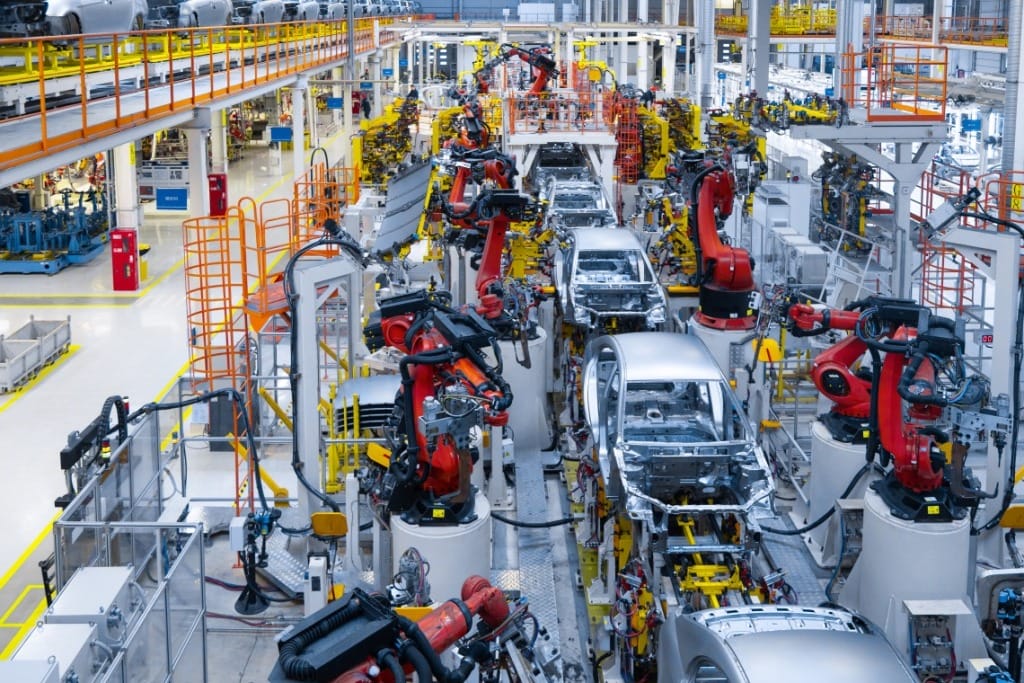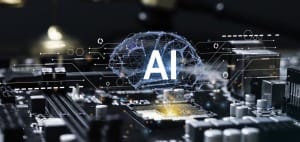Revolutionizing Manufacturing: The Synergy of AI and RPA for Unparalleled Efficiency
- ATMECS Content Team
- 3 Minutes Read
- Posted on Aug 30th, 2024
Introduction
In today’s fast-paced industrial landscape, manufacturing companies are constantly seeking ways to enhance production efficiency, reduce costs, and maintain a competitive edge while building energy efficient products. At ATMECS Global, we are at the forefront of integrating cutting-edge technologies to drive innovation in manufacturing. One of the most promising developments in recent years is the convergence of Artificial Intelligence (AI) and Robotic Process Automation (RPA). This powerful combination is reshaping the manufacturing sector, offering unprecedented opportunities for efficiency and growth.
Understanding AI and RPA in Manufacturing
Before delving into their integration, let’s briefly explore AI and RPA individually in the context of manufacturing.
Artificial Intelligence in manufacturing refers to the use of intelligent computer systems capable of performing tasks that typically require human intelligence. This includes machine learning algorithms that can analyze vast amounts of data to make predictions, optimize processes, and even make decisions. In manufacturing, AI can be applied to quality control, predictive maintenance, and supply chain optimization.
Robotic Process Automation, on the other hand, involves the use of software robots or “bots” to automate repetitive, rule-based tasks. In manufacturing, RPA can handle inventory management, order processing, and data entry, freeing up human workers to focus on more complex, value-added activities.
The Integration of AI and RPA: A Game-Changer
When AI and RPA are integrated, we enter the realm of intelligent automation. This synergy creates a system that not only automates repetitive tasks but also learns and improves over time. Here are some key benefits of this integration:
Enhanced Decision Making: AI algorithms can analyze data collected through RPA processes, providing insights that inform better decision-making.
Adaptive Automation: Unlike traditional RPA, AI-powered bots can adapt to changing conditions, handling exceptions and unforeseen scenarios more effectively.
Predictive Maintenance: By combining RPA’s data collection capabilities with AI’s predictive analytics, manufacturers can anticipate equipment failures before they occur, minimizing downtime.
Quality Control: AI can analyze data from RPA-driven quality checks, identifying patterns and potential issues that human inspectors might miss.
Integration of Operational and Information Technology: A confluence of these two types of technology enables seamless shop floor while providing enhanced visibility, communication and collaboration with the Supervisors and higher levels of management.
Enhancing Manufacturing Efficiency
The ultimate goal of integrating AI and RPA is to boost manufacturing efficiency. Here are specific ways this is achieved:
Streamlined Operations: AI-RPA systems can manage entire production schedules, adjusting in real-time to changes in demand or supply chain disruptions.
Reduced Errors: By automating manual, repetitive tasks, AI-RPA significantly reduces human error, leading to fewer defects and less waste.
Faster Production Cycles: Intelligent automation can optimize production processes, reducing cycle times and increasing output.
Improved Resource Allocation: AI can analyze production data to suggest optimal resource allocation, from raw materials to human labor.
To measure these improvements, manufacturers typically look at metrics such as Overall Equipment Effectiveness (OEE), throughput, defect rates, and cycle times. In terms of ROI, while initial implementation costs can be significant, many of our clients see payback periods of 12-18 months, with long-term cost savings in labor, materials, and energy usage.
Challenges in Adaptation
While the integration of AI and RPA in manufacturing offers tremendous benefits, it’s important to acknowledge and address the challenges that come with adopting these technologies.
Initial Investment Costs: Implementing AI and RPA systems often requires significant upfront investment in hardware, software, and infrastructure. This can be a barrier for small to medium-sized manufacturers but the benefits are hard to ignore.
Workforce Reskilling: As automation takes over routine tasks, there’s a need to reskill the existing workforce to handle more complex, AI-assisted roles. This transition can be time-consuming and may face resistance from employees.
Data Quality and Quantity: AI systems require large amounts of high-quality data to function effectively. Many manufacturers struggle with data silos, inconsistent data formats, or lack of historical data.
Integration with Legacy Systems: Many manufacturing facilities operate with legacy systems that may not be compatible with modern AI and RPA technologies. Ensuring seamless integration can be a complex and costly process.
Cybersecurity Concerns: As manufacturing processes become more connected, they also become more vulnerable to cyber threats. Implementing robust security measures is crucial but can be challenging.
Regulatory Compliance: Depending on the industry, there may be regulatory hurdles in implementing AI-driven decision-making processes, especially in sensitive manufacturing sectors.
Change Management: Shifting to an AI-RPA integrated system requires significant changes in processes and organizational culture. Managing this change effectively is often one of the biggest challenges.
Scalability and Flexibility: As business needs evolve, the AI-RPA system must be scalable and flexible enough to adapt. Designing such a system from the outset can be complex.
ATMECS’s Approach to AI-RPA Integration
At ATMECS, we understand that every manufacturing operation is unique. Our approach to AI-RPA integration involves:
Thorough Assessment: We start by analyzing your current processes to identify areas where AI-RPA can have the most significant impact.
Customized Solutions: We develop tailored AI-RPA solutions that align with your specific manufacturing needs and goals.
Seamless Implementation: Our team of experts ensures smooth integration with your existing systems and provides comprehensive training.
Continuous Optimization: We don’t just implement and leave. We continuously monitor and fine-tune the system to ensure optimal performance.
Future Trends and Opportunities
As we look to the future, several exciting trends are emerging in the AI-RPA space:
Edge Computing: Bringing AI capabilities closer to the point of data collection for faster processing and decision-making.
Digital Twins: Creating virtual replicas of physical manufacturing systems for advanced simulation and optimization.
Collaborative Robots (Cobots): AI-powered robots that can safely work alongside human workers, augmenting their capabilities.
To stay ahead of these trends, manufacturers should invest in scalable AI-RPA solutions, prioritize data quality and security, and foster a culture of continuous learning and innovation.
Conclusion
The integration of AI and RPA is not just a technological advancement; it’s a paradigm shift in manufacturing. By harnessing the power of intelligent automation, manufacturers can achieve unprecedented levels of efficiency, quality, and competitiveness. At ATMECS Global, we are committed to helping our clients navigate this transformation, turning the promise of AI and RPA into tangible results.



